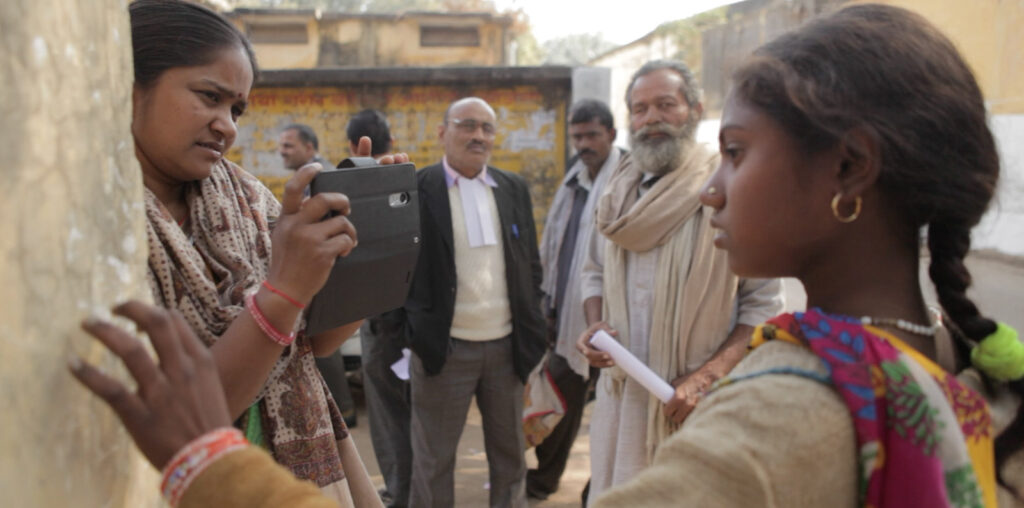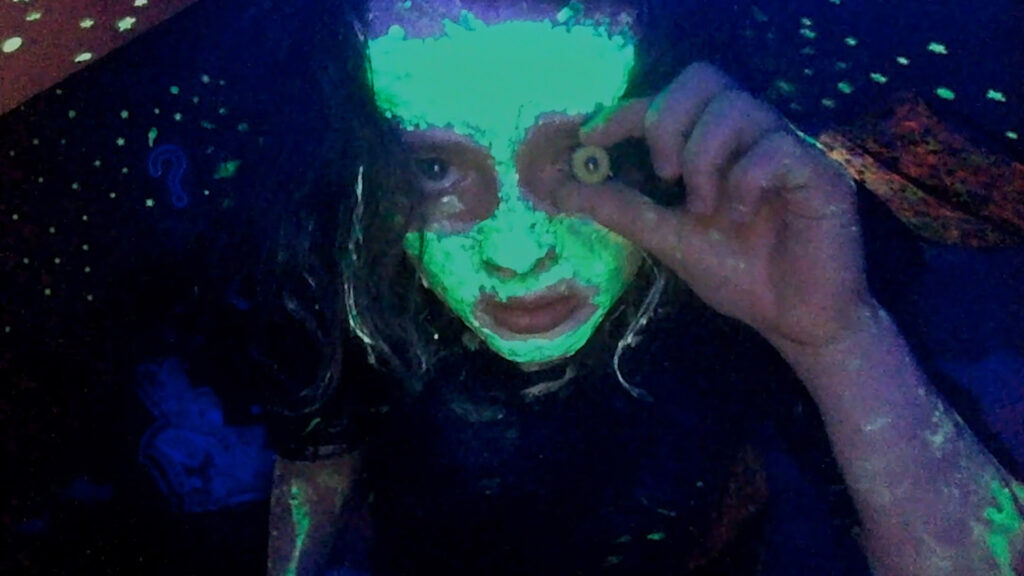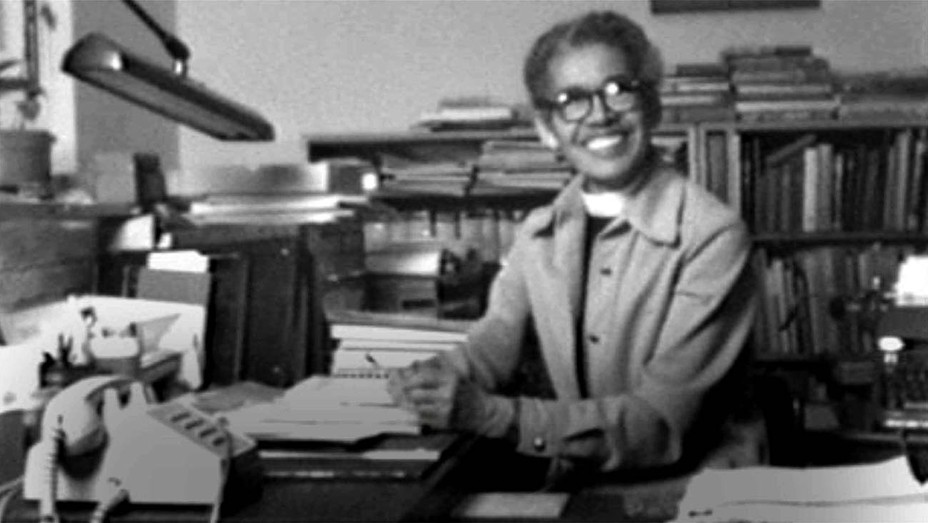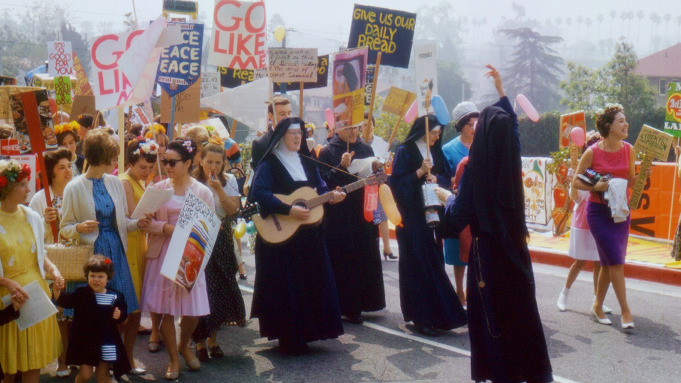Five Favorites From the 2021 Sundance Film Festival

You don’t need us to tell you that when it comes to independent film, the annual Sundance Film Festival is the big Kahuna. This is the time when much of the blueprint for the year in indie film is determined. The films that make a big impression here are likely to be the ones that everyone is talking about in a few months – the arthouse hits. But those three or four titles are not the only movies that play at Sundance. For professional film programmers, like our own, the fest is also a first look at a wide variety of projects from around the world. Every year our AFS Cinema screen features dozens of films that we first laid eyes on in Park City, Utah.
This year was a little different. There was no snow on the ground, and we could watch the films from the comfort of our own homes without having to eat popcorn and milk duds for dinner. But the Sundance programmers delivered another excellent slate of films. Here are some of AFS Lead Film Programmer Lars Nilsen‘s favorites from the fest. Keep an eye on them on our virtual screens and – fingers crossed – real screens this year.

WRITING WITH FIRE (Dir. Sushmit Ghosh, Rintu Thomas)
This doc introduces us to the female journalists who work for the online news outlet Khabar Lahariya in Northern India. These women are not only outcasts due to their gender in a culture that values men much more highly, they are also members of the “lowest” caste, the Dalits. As we observe them covering their beats, mainly using their mobile phones to film and record their reportage, we get a sense of the dangers that people in their socioeconomic class face. This background makes us admire them all the more because these women, led by their editor Meera, are stone cold bulldogs. Their fearless pursuit of the story is contrasted with members of the legitimate media, living soft lives and asking even softer questions. These are remarkable women and this doc honors their courage and tenacity.

WE’RE ALL GOING TO THE WORLD’S FAIR (Dir. Jane Schoenbrun)
Fans of Jane Schoenbrun’s traveling Eyeslicer programs, which you may have seen at the AFS Cinema, will be eager to see Schoenbrun’s narrative debut film. Here, a teenage girl participates in a mysterious online roleplaying game called the World’s Fair Challenge. The film’s perspective for much of its runtime is the video updates she makes as she records the effects of the unseen stimuli on her mind and body. Schoenbrun is a keen student of online subcultures and this film forces us to keep our antennae on high alert as we digest the context clues about the game and its players. In such a heightened state, the horror elements of the narrative catch us off guard in new and provocative ways.

MY NAME IS PAULI MURRAY (Dir. Betsy West, Julie Cohen)
The makers of RBG are back with a new doc that is both a major step forward for their filmmaking as well as a much-needed portrait of a brilliant and complex person whose life is the stuff of legend. Pauli Murray’s public and intellectual life is almost too eventful to be believed. Murray, disguised as a boy, rode freight trains during the Depression, was arrested in some of the earliest anti-segregation protests, became a lawyer, gestated some of the key points that were later used in Civil Rights legislation, and more. I won’t spoil the surprises. Throughout it all, she was wrapped up in a personal quest to determine her gender identity. Now, we might consider her non-binary, but in the years before society’s vocabulary could encompass this, she faced a major struggle to come to terms with it. This is a truly remarkable story, and it will not be surprising if a narrative biopic is made about Murray in a few years.

REBEL HEARTS (Dir. Pedro Kos)
The inner workings of convents and religious schools are mysterious things to the (literal) layperson. This documentary shows us the inner workings of Los Angeles’ Immaculate Heart College and the nuns who ran it, the Sisters Of The Immaculate Heart. That is interesting enough in itself, but the time period in which we are given this access is the era of dissent and change that began in the ’60s. As the nuns begin to question their role in the Church and the Church’s role in society, the ecclesiastical higher-ups appoint a very conservative Bishop to oversee their work and the dissent multiplies. A very interesting film even for people who are not involved in religious life. Special alert for lovers of printmaking and serigraphy, as one of the nuns was a very famous artist who worked in this medium, Corita Kent.

CRYPTOZOO (Dir. Dash Shaw)
Like Dash Shaw’s earlier animated feature MY ENTIRE HIGH SCHOOL SINKING INTO THE SEA, this highly imaginative new film is so full of ideas that the new effect can be somewhat exhausting. I will chalk a lot of that up to the fact that I was watching five or six movies every day, but you may find that this one is best taken in smaller doses. The aesthetic is post-psychedelic – I would place the visual and musical reference points at approximately 1980. That’s not a bad thing. There’s also a lot of anti-establishment paranoia, something that never seems to go out of style. The allegorical story of cryptids and their allies trying to survive and thrive in a world of capitalist and militaristic exploitation is stretched to the absolute breaking point but the visual phantasmagoria is endlessly surprising and rich.
These five films only scratch the surface of course. You’ll surely be seeing a number of our other favorites in theaters or on streaming services in the months to come. Keep an eye out for these: AMY TAN: UNINTENDED MEMOIR, FLEE, HOMEROOM, JOCKEY, RITA MORENO: A GIRL WHO DECIDED TO GO FOR IT, THE SPARKS BROTHERS, STREET GANG: HOW WE GOT TO SESAME STREET, SUMMER OF SOUL (…OR: WHEN THE REVOLUTION COULD NOT BE TELEVISED), and others.









